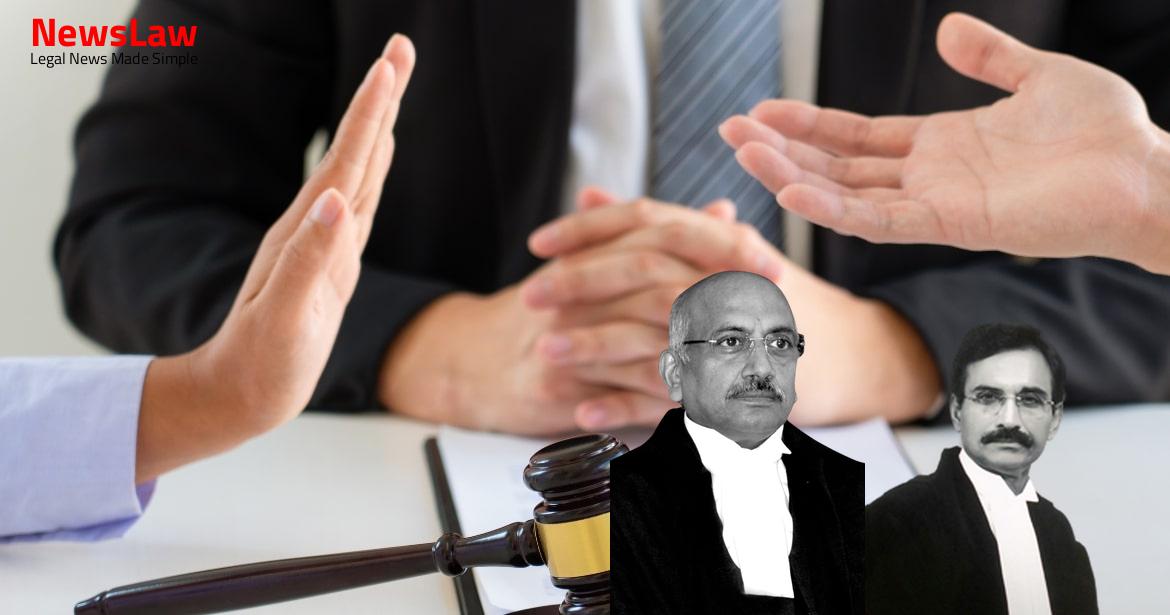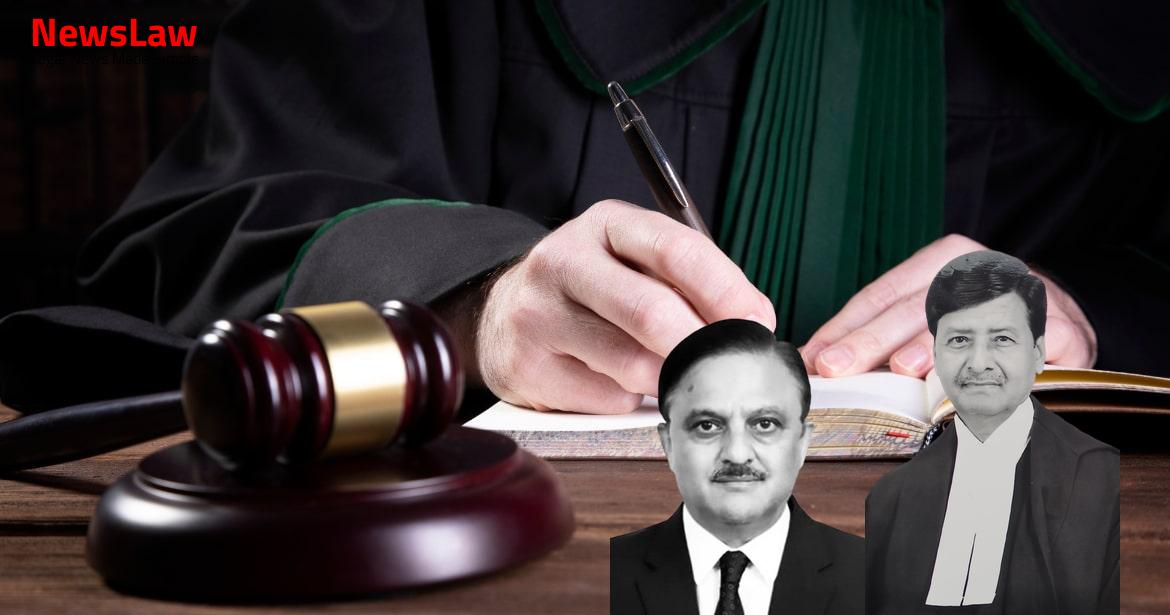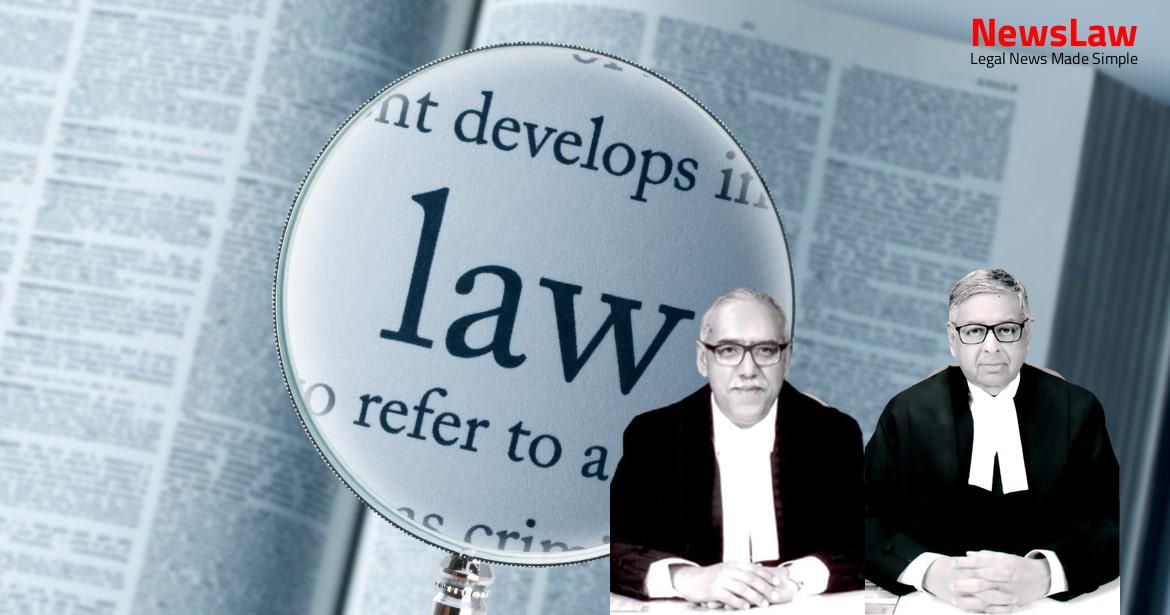The respondent – Asharam @ Ashumal was charge-sheeted on 06.11.2013, and after a trial lasting almost five years, vide judgment dated 25.04.2018 passed by the Magistrate, Special Court, Protection of Children from Sexual Offences Act, 2012, Jodhpur, Rajasthan, he has been convicted for the offences under Sections 370(4), 342, 354-A, 376(2)(f), 376-D, 506, 509/34 and 120-B of the Indian Penal Code, 1860, Sections 23 and 26 of the Juvenile Justice (Care and Protection of Children) Act, 2000, and Sections 5(f)/6, 5(g)/6, and 8 of the POCSO Act. dated 20.08.2013 (Exhibit P-11) was registered at Police Station Kamla Market, Central District, Delhi at 2:50 a.m.
Also Read: https://newslaw.in/case-type/civil/inherent-jurisdiction-and-invalid-decree-a-case-summary/
As per the prosecution ’s version, the Investigating Officer – Chanchal Mishra (PW-43) had recorded the statement of the victim under Section 161 of the Cr.P.C.
It is alleged that the victim (PW-5) was tutored based on the videography of the scene of the crime shown to the victim a day prior to the preparation of the spot panchnama / Mauka Naksha and site maps on 22.08.2013. for the first time on 21.08.2013 (Exhibit D-2), is falsified and rejected, the prosecution ’s case would not be able to link the victim (PW-5)’s presence with the respondent – Asharam @ Ashumal at the scene of the crime on 15.08.2013, the date when the offences were allegedly committed. The impugned judgment dated 10.02.2022, at the same time, quotes Ajay Pal Lamba’s assertion in the Book – “ In any case, one would not be very wrong to assume that not much of the forensic evidence would be found at the [scene of the crime] because of…the sheer delay in filing the FIR… ”, as the offence was stated to have occurred on 15.08.2013, while the F.I.R.
The impugned judgment observes that the defence had relied on contradictions between the first version given by the victim (PW-5) in the ‘Zero’ FIR (Exhibit P -11) and the statement of the victim (PW-5) under Section 164 of the Cr.P.C.
The High Court observes that the trial court had rejected the argument by the defence that videography of the crime scene was done by the police on 21.08.2013, and was shown to the victim (PW-5), and consequently placed reliance on the victim (PW-5) ’s description of the scene of crime in view of her statement, Exhibit D-2, given to the Investigating Officer – Chanchal Mishra (PW-43) under Section 161 of the Cr.P.C. The relevant portion of the judgment of the trial court reads: “ 298- In my humble opinion circumstances make statements more than the witnesses. After the videogrpahy of the place of incident the witness said transcription C.D. of videography of the circumstances told by the above victim was prepared in his presence. 299- We have carefully perused the Ex.P-69 Memo of Transcription, part of which is Ex.P-70 print out.
In the above transcription Ex.P-70
we matched the facts told by the victim about taking inside Kutiya from the Ex.P-13 and Ex.P-14 and photographs Ex.P-16 to Ex.P32.
She has been suggested that what were the things in the room and where it were situated, details of which have not been mentioned in the FIR, NGO’s report and statements of Section 164 CrPC.
Above mentioned circumstances are expressing this truth before the Court that the Victim had sent inside the above Kutiya wherein as per the Defence no one was allowed to go. Thereupon, the Investigating Officer – Chanchal Mishra (PW-43) had proceeded to record the statement of the victim (PW-5) under Section 161 of the Cr.P.C. This version and stand of the prosecution, as accepted by the trial court, is not on the ground and reason that the police team had not gone inside the room or the bathroom on 21.08.2013, but by rejecting the argument that a police officer or the Investigating Officer had prompted or tutored the victim (PW-5) to give the description and details of the room and bathroom.
Whether this finding is correct will be tested in the appeal, albeit the reasoning given in the impugned judgment to summon and examine Ajay Pal Lamba as a court witness cannot be sustained on the ground that Ajay Pal Lamba had purportedly recorded a video on his mobile phone. by a police officer during investigation cannot be used as evidence, albeit the accused may use a part of the statement in terms of the proviso to Section 162 of the Cr.P.C. The touchstone of when the additional evidence at the appellate stage may be taken on record is not the impossibility or inability to pronounce the judgment in its absence, but whether there would be a failure of justice without such additional evidence. relate to power of the court to take additional evidence; the former at the stage of trial and before the judgment is pronounced; and the latter at the appellate stage after judgment by the trial court has been pronounced.
should be read as somewhat more restricted in comparison to Section 311 of the Cr.P.C., as the appellate court is dealing with an appeal, after the trial court has come to the conclusion with regard to the guilt or otherwise of the person being prosecuted.
Also Read: https://newslaw.in/case-type/criminal/conviction-upheld-for-murder-and-concealment-of-body/
While the prayer for leading additional evidence should be permitted to correct a bona fide error or otherwise, and a party may be entitled to further opportunity without any fault on the part of the opposite party, the request for recall should be bona fide and is to be balanced carefully with relevant considerations, including hardship to the witness and delay of the proceedings. Balance between the rights of an accused and the interests and rights of an individual victim and the society, without compromising the right of the accused to a fair trial, has been highlighted by this Court in Girish Kumar Suneja v. If we carefully look at the reasons given, which have found favour in the impugned judgment, we can easily visualize that there could be further applications for recording of additional evidence of the main witnesses, the victim (PW-5) and/or the Investigating Officer – Chanchal Mishra (PW-43), who have already been subjected to lengthy examinations over a prolonged period on eleven occasions in the case of the victim (PW- 5) as well as the Investigating Officer – This application was rejected by the High Court vide order dated 07.07.2022 noting that the defence has sought for multiple adjournments in the past, two previous applications for suspension of sentence have been dismissed and the respondent – Asharam @ Asharam @ Ashumal continues to be in custody in another trial in Gujarat.
Case Title: STATE OF RAJASTHAN Vs. ASHARAM @ ASHUMAL (2023 INSC 383)
Case Number: Crl.A. No.-001156-001156 / 2023



